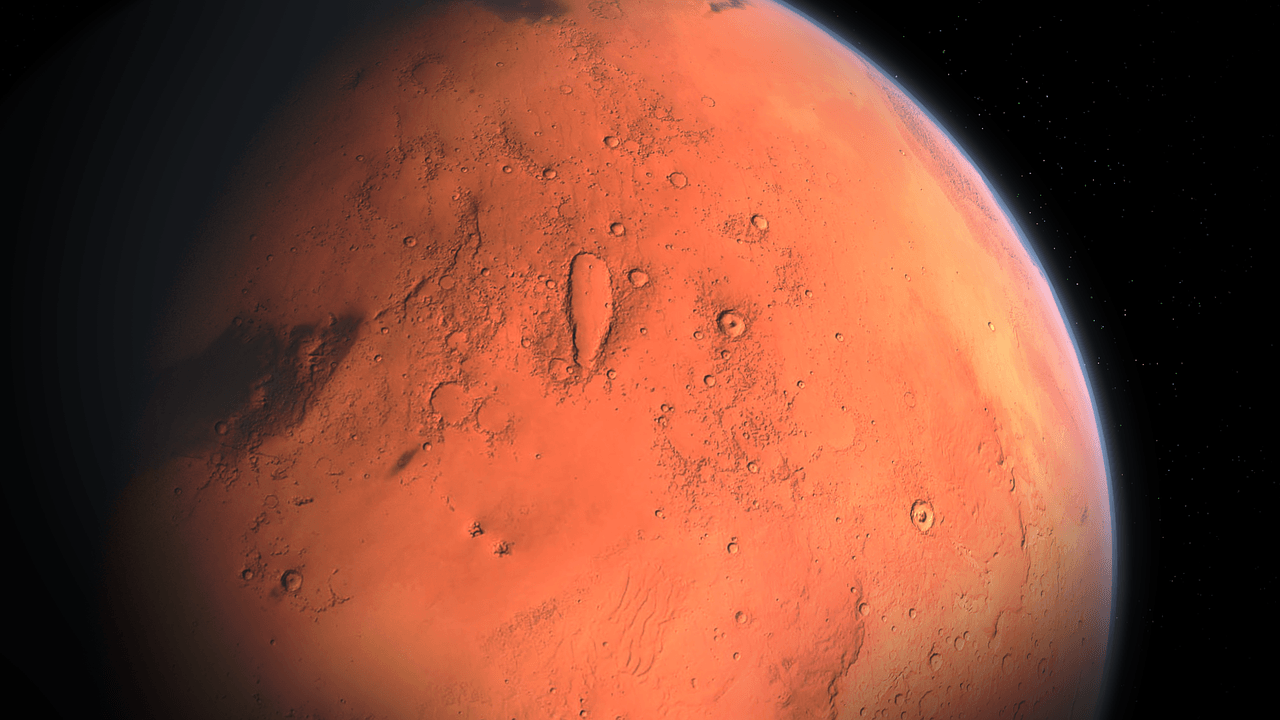Ever since scientists sent robotic rovers to Mars, the hunt for water has been going on. A new discovery of massive Martian ice deposits beneath its north pole could be remnants of ancient polar ice sheets. That said, the discovered ice sheets could provide the main water reservoirs for the planet, which is a huge milestone in determining whether Mars would ever be habitable or not.
The discovery by a group of scientists at the University of Texas at Austin and the University of Arizona focused on using measurements by the Shallow Radar (SHARAD) from NASA’s Mars Reconnaissance Orbiter (MRO). SHARAD ejects radar waves which can reach up to a mile and a half under the surface of the Red Planet, according to a study published in Geophysical Research Letters.
If the massive Martian ice deposits beneath the north pole melted, it would be equivalent to a global water layer being spread at a depth of at least 5 feet.
“We didn’t expect to find this much water ice here,” lead author Stefano Nerozzi, a graduate research assistant at the University of Texas Institute for Geophysics (UTIG) who is completing his Ph.D. at the Jackson School of Geosciences said in a statement. “That likely makes it the third largest water reservoir on Mars after the polar ice caps.”
Authors of the study believe that the layers of ice formed when the ice accumulated in the past, when the last ice ages on Mars occurred. That said, each time the planet melted, the ice caps would get covered by sand which protected the ice from the impact of the sun, preventing it from leaving into the atmosphere.
Scientists are aware of the different glacial events on Mars, which are a result of the planet’s orbit and tilt. In the last 50,000 years, Mars leaned toward the sun, and then gradually began returning into an upright position. What makes this discovery of the massive Martian ice deposit important is that researchers thought that the ancient ice caps from the planets were lost. However, the new study reveals that a significant amount of ice survived beneath the surface.
“Surprisingly, the total volume of water locked up in these buried polar deposits is roughly the same as all the water ice known to exist in glaciers and buried ice layers at lower latitudes on Mars, and they are approximately the same age,” Co-author Jack Holt, a professor at the Lunar & Planetary Laboratory of the University of Arizona, said.
Holt previously worked as a UTIG scientist and research professor for 19 years until he joined the team at the University of Arizona in 2018. His expertise focused on co-investigating using the SHARAD device since the Mars orbiter arrived to the Red Planet back in 2006.
According to Nerozzi, this discovery could help change the way Mars is studied, as the record of past polar glaciation could show whether Mars previously could have supported life as we know it on Earth, and what caused the water to dissipate into the atmosphere.





